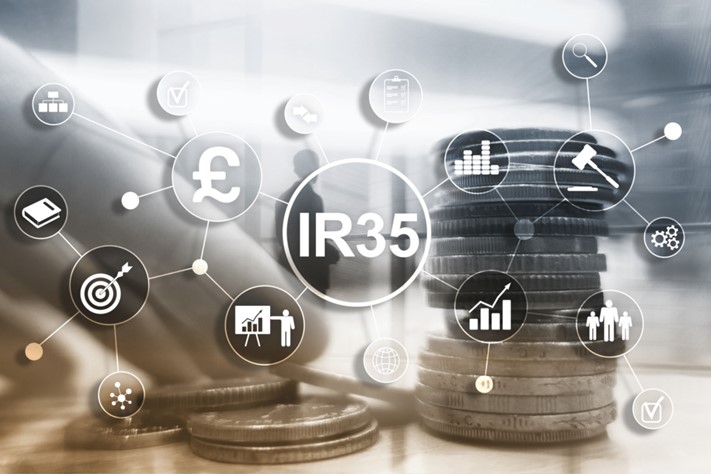In today’s interconnected global business environment, a key factor driving innovation, productivity, and corporate culture is diversity and inclusion. This article delves deep into how to promote diversity and inclusion in HR recruitment, showcasing why they matter and the steps your organisation can take to ensure they are an integral part of your HR recruitment strategy.
Understanding Diversity and Inclusion
Before we begin, let’s ensure we’re on the same page regarding these two key terms.
What is Diversity?
Diversity in the workplace refers to the acknowledgment, understanding, acceptance, and celebration of differences among employees. These differences could be in terms of race, gender, sexual orientation, religion, age, and other minority statuses.
What is Inclusion?
Inclusion, on the other hand, is about creating an environment where everyone, regardless of their differences, feels valued, respected, and integral to the organisational success.
The Importance of Diversity and Inclusion in HR
The role of HR is evolving, and diversity and inclusion are now central to its function. A diverse and inclusive HR team fosters a broader perspective, making it easier to understand and meet the needs of diverse employees. Moreover, an inclusive HR team is a testament to the organisation’s commitment to these values, setting a benchmark for the rest of the company.
How to Promote Diversity and Inclusion in HR Recruitment
Promoting diversity and inclusion begins with recruitment. Here’s how you can do it.
Developing an Inclusive Recruitment Strategy
Ensure your recruitment strategies are designed to attract a diverse pool of candidates. This could mean partnering with minority-focused job boards, attending diverse job fairs, or promoting your commitment to diversity and inclusion in job advertisements.
Outreach to Diverse Talent Pools
Actively reach out to various communities, networks, and organisations that can connect you with diverse talent. It’s not enough to wait for diverse candidates to come to you—you must go to them.
Implementing Inclusive Job Descriptions
Job descriptions can be a major determinant of who applies for your job. Ensure they are inclusive and do not alienate any potential candidates.
Ensuring Unbiased Interview Process
Train your HR team on unconscious bias and ensure that they are conducting interviews in a way that gives every candidate a fair chance.
The Role of Technology in Promoting Diversity and Inclusion
In the digital era, technology can assist in promoting diversity and inclusion. For example, AI can help in the initial screening of resumes, thereby reducing the risk of unconscious bias.
Case Study: Success Stories of Diversity and Inclusion in HR
Several organisations have set benchmarks in promoting diversity and inclusion in HR. Let’s take the example of Google. The tech giant is recognised for its commitment to creating a diverse and inclusive workplace. It has implemented various initiatives, such as its unconscious bias training program, and uses analytics to ensure fair hiring and promotional practices.
Challenges in Promoting Diversity and Inclusion in HR
Despite the clear benefits, promoting diversity and inclusion in HR is not without its challenges. There can be resistance to change, biases (both conscious and unconscious), and a lack of knowledge about the benefits of diversity and inclusion. Overcoming these hurdles requires strong leadership, education, and a firm commitment to these values.
Summary
Promoting diversity and inclusion in recruitment for HR roles is a critical step for any organisation looking to cultivate an innovative, vibrant, and competitive workforce. It’s a journey that requires ongoing commitment, but the payoff in terms of a more engaged, innovative, and productive workforce is well worth it.
Frequently Asked Questions
What does diversity in the workplace imply?
Diversity in the workplace refers to acknowledging, understanding, accepting, and celebrating differences among employees. These differences can be related to race, gender, sexual orientation, religion, age, and other minority statuses.
How is inclusion defined within an organisation?
Inclusion refers to the creation of an environment where everyone, regardless of their differences, feels valued, respected, and essential for organisational success.
Why is it important to have diversity and inclusion in HR?
A diverse and inclusive HR team brings a wider perspective, making it easier to understand and meet the needs of diverse employees. Furthermore, such a team manifests the organisation’s commitment to these values, setting a standard for the rest of the company.
What are some strategies for promoting diversity and inclusion in HR recruitment?
To promote diversity and inclusion in HR recruitment, strategies can include developing an inclusive recruitment strategy, reaching out to diverse talent pools, implementing inclusive job descriptions, ensuring an unbiased interview process, and leveraging technology such as AI to reduce unconscious bias.
What are the challenges in promoting diversity and inclusion in HR?
Challenges can include resistance to change, conscious and unconscious biases, and a lack of knowledge about the benefits of diversity and inclusion. Overcoming these hurdles requires strong leadership, education, and a firm commitment to these values.
The Benefits of Working with a HR Recruitment Agency
Due to the importance of HR roles, it’s crucial to find the right people to fill them, and that’s why many organisations choose to work with specialist HR recruitment agencies. These specialist agencies who focus solely on finding high calibre HR professionals provide a wide range of benefits over and above an organisation undertaking this activity internally.
Access to a Wide Talent Pool
Quality Candidates
Recruitment agencies have access to a broad network of potential candidates, some of whom may not be actively seeking a new role but may be interested if the right opportunity comes along. This wide pool increases the likelihood of finding high-quality candidates that fit your needs.
Saves Time
Finding the right candidate for high-level HR positions can be time-consuming. However, with a recruitment agency, the process is streamlined, as they handle the initial steps like screening and first-round interviews.
Specialised Knowledge and Expertise
Recruitment agencies often have specialised knowledge and expertise in the HR sector. They know what skills, qualifications, and experience are necessary for high-level HR positions, which enables them to find the perfect candidate for the job.
Efficient Process Management
Recruitment agencies manage the recruitment process from start to finish. They handle everything from job postings, vetting candidates, conducting initial interviews, to salary negotiations and job offers, making the process efficient and stress-free.
Confidentiality and Professionalism
Recruitment agencies maintain a high level of confidentiality, ensuring that the details of your search remain private. Additionally, they conduct their business with the utmost professionalism, maintaining your company’s reputation in the market.
Case Study: Equal Experts, London
Having grown to over 1,000 people globally, Equal Experts were ready to hire a People Leader who would bring coherence to the network: their employees, contractors and alumni.
They were seeking an individual who would improve the culture every day; a person who would help them as a guide, a coach and a torch bearer. Someone who would gain the network’s trust and help move towards concrete achievements; measuring and improving psychological safety so that teams can have challenging but safe conversations to reach happy outcomes.
PEEQ Recruitment Agency was appointed to fill this position. For full details of this project and the outcome, please read the full CASE STUDY.
How to Choose the Right Recruitment Agency
Choosing the right recruitment agency involves considering factors such as their reputation, success rate, area of expertise, and previous client reviews. For more information about choosing the right recruitment agency, please read THIS article.
Why Choose PEEQ HR Recruitment Agency?
The average fill rate amongst HR Recruitment Agencies is 46%, but at PEEQ our average fill rate sits above 90%, So you are twice as likely to make a hire if you choose PEEQ.
This is due to two reasons:
Firstly, we only partner with our clients on an exclusive basis, so we ‘own the responsibility’
Secondly, we don’t employ recruiters. Instead, we work with trusted and proven freelance HR recruiters, to hire for our clients.
We give them the tools and infrastructure to be successful, and the rest is down to their magic and experience. Our Associates are not employed by us and only get paid for making a successful hire.
This makes them incredibly tenacious and committed to finding the best talent, which is why our fill rate sits above 90%, compared to the industry average of 46%.
More reasons to work with PEEQ
Psychometric insight reports
Obtain a unique insight into your candidates’ Cultural Fit, Strengths, Decision Making and Resilience through our accredited assessments.
Post-hire executive coaching
Set your hire up for success with a tailored coaching programme that helps them achieve their full potential personally and professionally.
Up to 6 Month Placement Guarantees
Confidently make your hire under our 2, 3 or 6 Month Placement Guarantee; safe in the knowledge that we’ll offer you a free replacement if they leave within our pre-agreed time period.
BeTalent Accredited Approach
We are proud to offer the BeTalent Accredited approach that enables us to deliver scientific candidate assessment, in accordance with the British Psychological Society standards.
This solution is for you if you want:
- An objective way to determine who is the best fit for your role
- A comprehensive understanding into your new hire before they start
- Peace of mind that you’ve made the right hiring decision.
Get in Touch with PEEQ HR Recruitment
We are here to help you. If you have any questions, queries or would like to discuss a potential hire, a job application, or require clarification on anything detailed on our website, then we would love to hear from you.
Please feel free to call, email or complete the form provided and we will assist you.
Share This Article
PEEQ HR Recruitment Agency
Diversity and Inclusion in HR, PEEQ HR Recruitment agency is a specialist HR recruiter in London, HR recruiter, HR recruiting agency, HR agency and HR agency London are other ways of describing them. Essential HR Recruiting Metrics, Human Resources Recruiter and human resources recruiter London are also human resources recruitment and human resources recruitment strategies. HR in business success, HR Recruitment Consultant, A HR recruiting consultant and HR recruiter specialist are also a HR recruit agency and a HR recruit agency London. PEEQ specialise in HR permanent hires and HR contract hires and are a specialist HR recruiting agency London who work with Web Agency UK. HR Recruitment Process PEEQ HR Recruiting agency is a specialist HR recruiter in London, HR recruiter, HR recruiting agency, HR agency and HR agency London are other ways of describing them. HR in Crisis Management, Essential HR Recruitment Metrics, Human Resources Recruiter and human resources recruiter London are also human resources recruitment and human resources recruitment strategies. A HR consultant and HR recruiter specialist are also a HR recruit agency and a HR recruit agency London. PEEQ specialise in HR permanent hires and HR contract hires and are a specialist HR agency London who work with Web Agency UK.
HR in Crisis Management, HR Staffing Services London, London-based Human Resources Recruitment, HR Talent Acquisition London, Workforce Hiring London, Employment Agency London, HR Hiring Firms London, Recruitment Solutions London, Staffing Agency London, Talent Management Services London, HR Executive Search London, HR Job Placement London, London HR Headhunters, Workforce Recruitment London, Human Capital Management London, HR Personnel Agency London, London Recruitment Consultancy, HR Professionals Search London, HR Job Market London, HR Outsourcing Agency London, Employee Recruitment London, HR Search Firms London, Human Resources Consultancy London, Staffing Solutions London, HR Executive Recruitment London, Talent Search Agency London. HR in business success.





